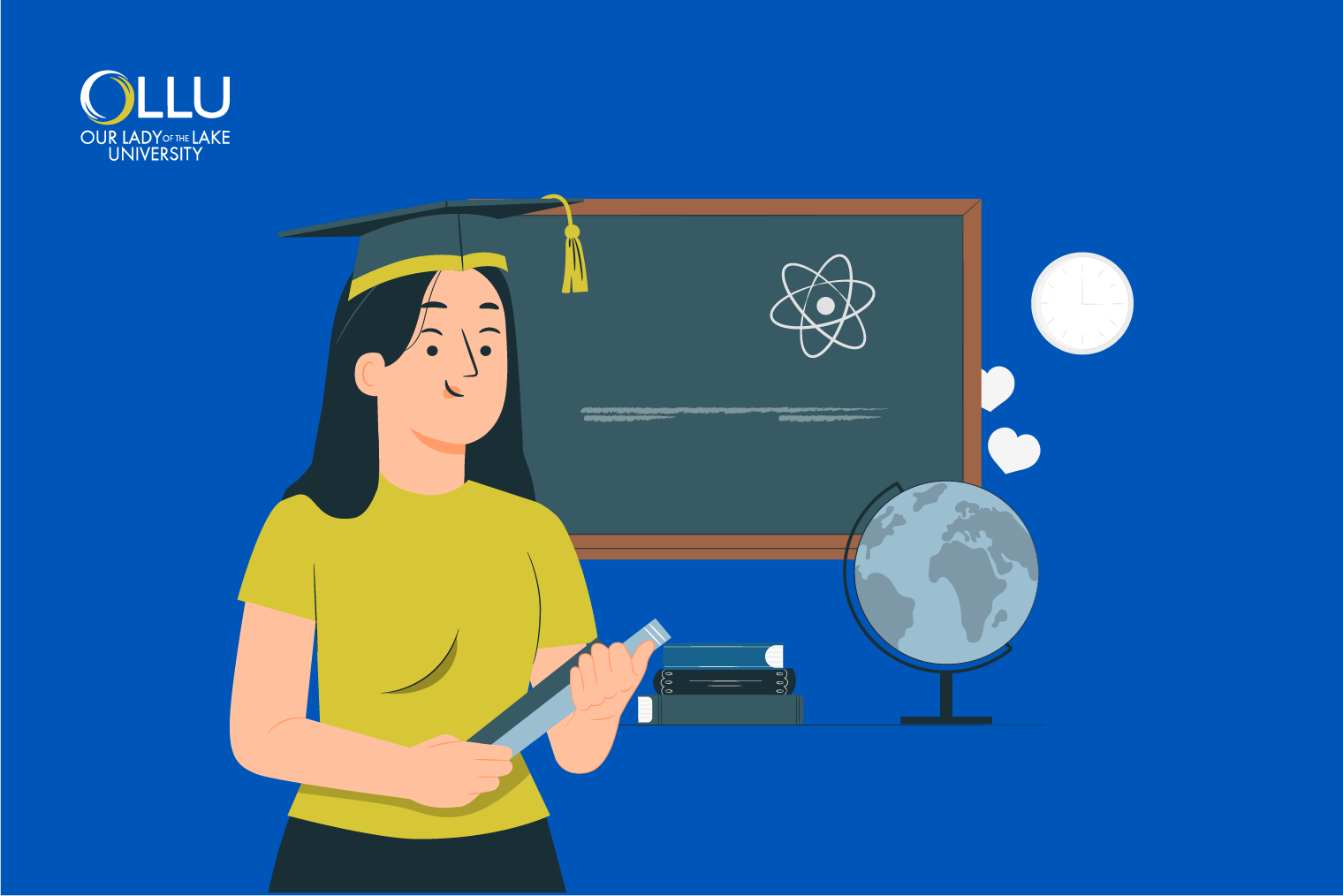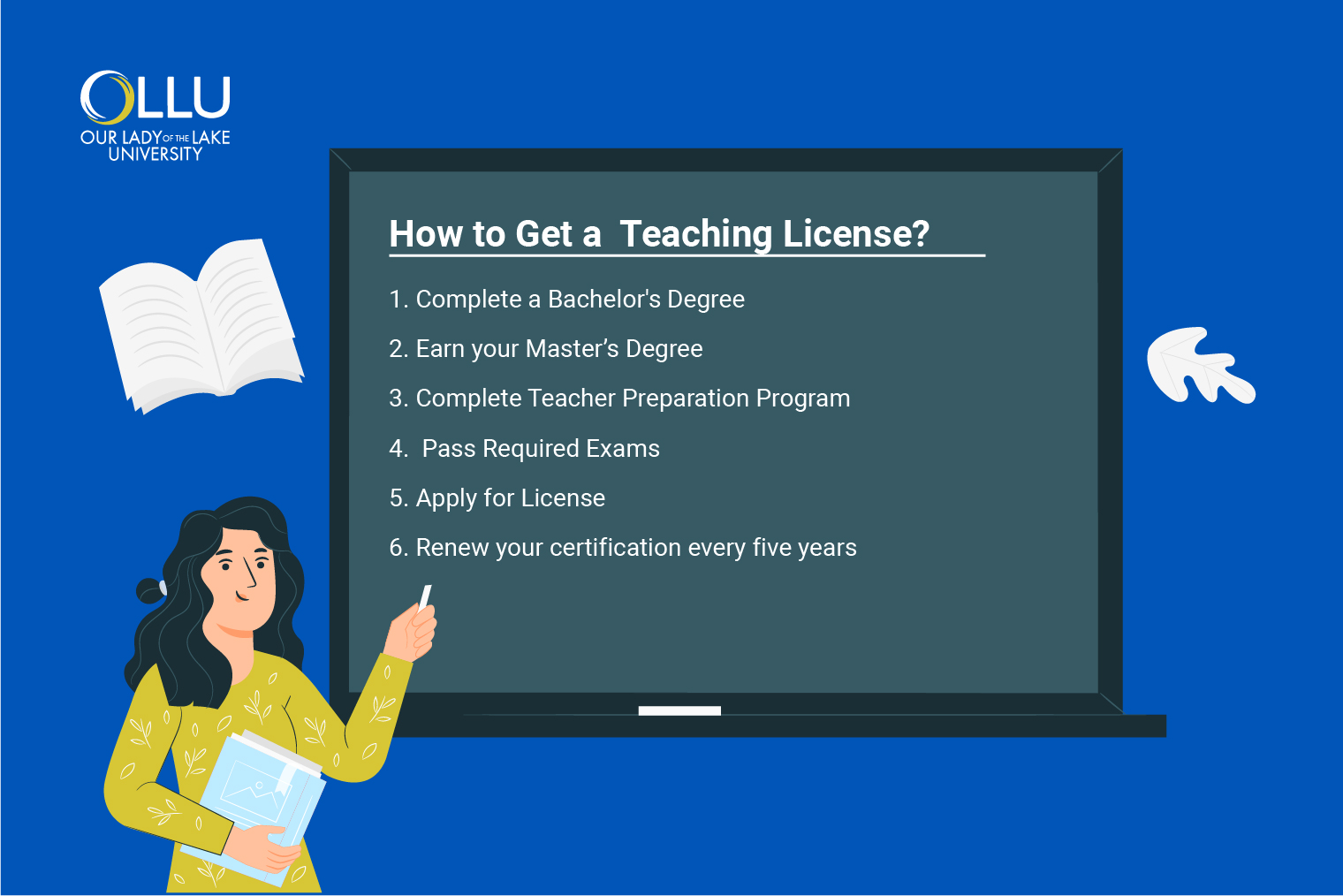How to Get a Teaching License: A Step-by-Step Guide
May 10, 2024
 Obtaining a teaching license is a crucial step for those pursuing a career in education.
This guide offers practical insights and guidance to navigate the licensure process
efficiently, covering foundational requirements, teacher preparation programs, and
licensure exams. Additionally, we examine the importance of licensure in maintaining
educational standards and fostering student success.
Obtaining a teaching license is a crucial step for those pursuing a career in education.
This guide offers practical insights and guidance to navigate the licensure process
efficiently, covering foundational requirements, teacher preparation programs, and
licensure exams. Additionally, we examine the importance of licensure in maintaining
educational standards and fostering student success.
Whether you are a recent graduate eager to start your teaching career or a seasoned professional looking to reaffirm your credentials, this guide equips you with all the essential information on how to get a teaching license.
Understanding the Basics
Becoming a licensed educator requires a clear understanding of the concept of a teaching license and its significance in the field. Learning about the requirements and reasons for obtaining a teaching license is essential to start the journey toward becoming a licensed educator.
What is a teaching license?
A teaching license is a formal credential issued by state education departments or regulatory bodies that authorizes individuals to teach in public schools within a specific state or jurisdiction. The purpose of a teaching license is to validate an educator's qualifications and competencies and ensure that they meet established standards of knowledge, skills, and ethical conduct. It signifies professionalism and accountability, assuring parents, students, and school administrators that teachers possess the necessary expertise to provide quality instruction and foster student learning and development.
Why get a teacher license?
A teaching license grants numerous benefits beyond the basic authorization to teach in public schools. At its core, a teaching license validates a teacher's quality by establishing strict standards for competence and professionalism. It signifies that an educator has completed rigorous training, mastered essential pedagogical skills, and demonstrated expertise in their subject matter, thereby ensuring their capability to educate students effectively.
Moreover, a teaching license is a mark of commitment to uphold ethical standards and comply with the regulations set by educational authorities. It grants educators access to ongoing professional development opportunities crucial for continuous improvement and career advancement.
Additionally, having a teaching license enhances employability, as many educational institutions prioritize hiring licensed teachers to ensure high-quality education. It also reinforces a teacher's dedication to professional ethics and lifelong learning, which are essential for maintaining the integrity and standards of the profession.
Ultimately, obtaining a teaching license certifies an educator's qualifications and contributes significantly to the advancement of the teaching profession. It ensures that teachers are well-prepared to positively impact their students' lives and the educational community at large.
How to Get a Teaching License?
 Acquiring a teaching license is a process that prospective educators must follow to
meet all requirements. This process usually involves completing education prerequisites,
participating in preparation programs, passing necessary licensure exams, applying
for the license, and renewing certification periodically. Below, we will discuss each
step in detail to help you better understand the whole process.
Acquiring a teaching license is a process that prospective educators must follow to
meet all requirements. This process usually involves completing education prerequisites,
participating in preparation programs, passing necessary licensure exams, applying
for the license, and renewing certification periodically. Below, we will discuss each
step in detail to help you better understand the whole process.
1. Complete a bachelor's degree
Completing a bachelor's degree, preferably in education or a relevant subject area, is a foundational step toward obtaining a teaching license. This undergraduate program provides aspiring educators with essential knowledge in educational theory, child development, instructional methods, and subject-specific content.
A bachelor's degree in education equips individuals with the pedagogical skills and theoretical understanding necessary to effectively teach diverse student populations. For those pursuing licensure in specific subject areas, such as mathematics or English, a bachelor's degree in the respective field ensures a deep understanding of the subject matter, which is crucial for delivering quality instruction.
Lastly, completing a bachelor's degree demonstrates a commitment to academic excellence and lays the groundwork for further professional development in education.
2. Earn your master's degree
Pursuing a master's degree, whether in education or a specialized area, presents an invaluable opportunity for educators to enhance their teaching skills and expand career opportunities. Such a graduate degree in education offers a deeper exploration of pedagogical theory, educational research, and instructional strategies, empowering educators to become more effective practitioners in the classroom.
Furthermore, specialized master's programs provide in-depth knowledge and expertise in specific areas of interest, such as curriculum development, educational leadership, or special education. They equip educators with specialized skills and open doors to leadership roles within schools, districts, or educational organizations. Finally, earning a master's degree demonstrates a commitment to ongoing professional development and positions educators as lifelong learners dedicated to improving their craft.
3. Complete a teacher preparation program
Next, enrolling in and completing a state-approved teacher preparation program is also crucial to obtaining a teaching license. These programs provide aspiring educators with the necessary coursework and practical experiences to develop the skills and knowledge required for effective teaching.
Typically, teacher preparation programs combine academic coursework and hands-on experiences, such as student teaching or internships. Throughout the program, students engage in courses covering educational psychology, curriculum development, classroom management, and teaching methods specific to their chosen subject or grade level. The student teaching component allows aspiring educators to gain real-world classroom experience under the guidance of experienced mentor teachers. This hands-on experience provides invaluable opportunities to apply theoretical knowledge in a practical setting, refine teaching strategies, and develop effective classroom management techniques.
4. Pass required exams
Passing required exams, such as the Praxis series or state-specific assessments, demonstrates subject knowledge and teaching proficiency. These exams assess educators' understanding of content knowledge, pedagogical principles, and ability to apply these concepts in the classroom.
By passing these exams, aspiring educators validate their competency in their chosen subject area or grade level, ensuring they possess the foundational knowledge necessary to effectively teach students.
Lastly, these exams help to maintain high standards of teaching quality and ensure that licensed educators are equipped to meet the diverse needs of their students.
5. Apply for license
The application process for obtaining a teaching license involves several steps, including submitting required documentation and meeting eligibility criteria set forth by state education authorities. Aspiring educators must complete an application form provided by their state's department of education or licensing board.
Alongside the application form, individuals are often required to provide evidence of fulfilling all licensure requirements, such as transcripts verifying completion of a bachelor's or master's degree, documentation of completion of a teacher preparation program, and proof of passing required licensure exams.
Additionally, applicants may need to undergo a background check and provide proof of legal eligibility to work in the United States. Once all the necessary documentation is submitted and eligibility criteria are met, the state education department reviews the application and, if approved, issues the teaching license.
The application process may vary slightly depending on the state or jurisdiction, but it ensures that only qualified individuals receive licensure to teach in public schools.
6. Renew your certification every five years
It's important to also renew your teaching certification every five years. This periodic renewal process ensures that educators stay up-to-date with new practices, pedagogical advancements, and changes in curriculum and assessment.
Additionally, the renewal allows teachers to engage in continuing education, professional development activities, and reflective practice to enhance their teaching effectiveness and adapt to the needs of diverse student populations. This way, educators reaffirm their dedication to maintaining high standards of excellence in their profession and demonstrate their ongoing commitment to lifelong learning and improvement.
Furthermore, periodic renewal helps to uphold the integrity and credibility of the teaching profession by ensuring that licensed educators remain competent and qualified to meet the demands of the ever-evolving educational landscape.
Types of Teacher Certification
Teacher certification encompasses various types, each with its requirements and implications for educators. Initial certification is typically the first level of licensure obtained by aspiring educators upon meeting basic requirements, such as completing a Bachelor's Degree, a teacher preparation program, and passing required exams.
Provisional certification may follow initial certification and often requires educators to fulfill additional requirements, such as completing a period of mentored teaching or professional development activities. This status is usually temporary and may lead to full professional certification upon meeting specified criteria.
Lastly, professional certification is the highest level of licensure, indicating that educators have demonstrated advanced proficiency in their teaching practice and have fulfilled all requirements for ongoing professional development.
Requirements for each type of certification may vary depending on state regulations and individual circumstances, but they collectively serve to ensure that educators possess the necessary skills, knowledge, and commitment to excel in the teaching profession.
The Bottom Line
Obtaining a teaching license is a significant milestone for individuals who aspire to become educators. It serves as a validation of their qualifications, expertise, and commitment to excellence in the teaching profession. The main steps toward a teaching license include getting a bachelor's or master's degree, participating in a state-approved teacher preparation program, passing required exams, and applying for licensure.
The Master of Education (MEd) degree at OLLU helps you embark on a rewarding journey toward positively impacting students' lives while upholding the integrity and professionalism of the teaching profession.
Frequently Asked Questions (FAQs)
How do I get a US teaching license?
To get a US teaching license, you'll typically need to complete a bachelor's degree, attend a state-approved teacher preparation program, pass required exams, and apply for licensure through your state's education department.
What is the fastest way to become a teacher in Texas?
The fastest way to become a teacher in Texas is through an alternative certification program, which allows you to become certified while teaching full-time under a probationary certificate.
What's the fastest you can become a teacher?
The fastest route to becoming a teacher depends on individual circumstances, but alternative certification programs often offer accelerated pathways for career changers or those with non-education backgrounds.
Is it too late to become a teacher at 40?
It's not too late to become a teacher at 40; many people enter the teaching profession later in life, bringing valuable life experiences and skills to the classroom. Alternative certification programs and flexible licensure pathways cater to individuals pursuing teaching as a second career.